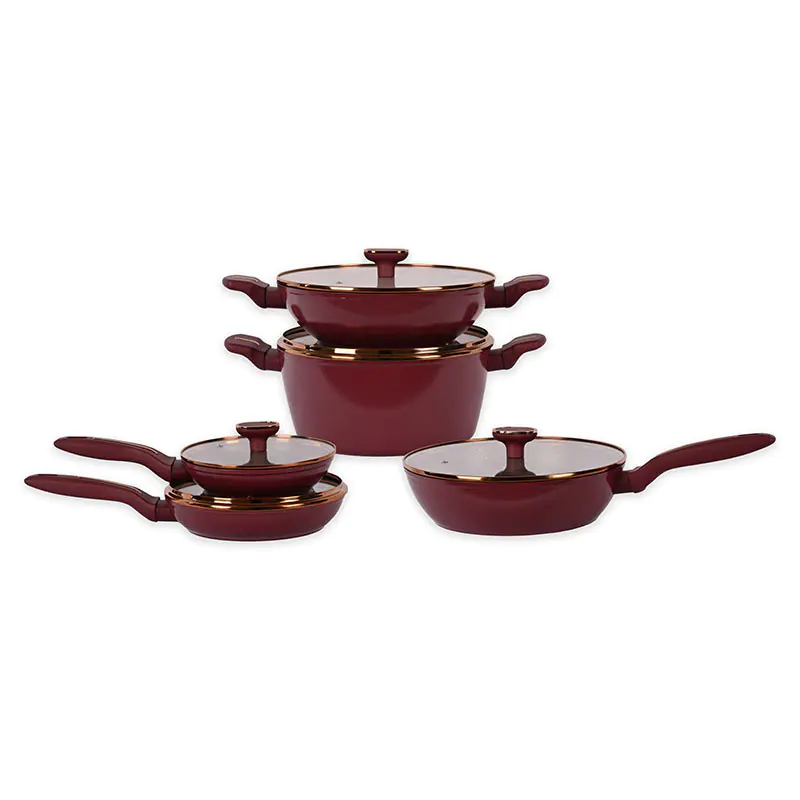
Remember those days when food would always stick to the bottom of the pan while stir-frying, and you had to scrub hard to clean it? Ever since non-stick pans entered our kitchens, all of that has changed. It's not just an upgrade to cookware; it's a revolution in our cooking habits. The modern kitchen enjoys the versatility and ease of use that makes non-stick pans fun accessory in cooking.
What Are Non-Stick Pans, and Why Are They So Great?
A non-stick pan is cookware that has a special coating on the inner surface made of teflon or other ceramic materials that prevents food from sticking.
To mention a few benefits, Non-stick pans also allow you to use less cooking oil. While traditional pans require more oil to keep a coating of food from sticking, non-stick pans only require a thin layer, or even no oil at all. Non-stick pans are great for a low-fat diet as well.
No need to waste time or effort scraping off food residue as cleaning is fast and easy.
| Feature |
Non-Stick Pan |
Traditional Iron/Stainless Steel Pan |
| Non-Stick Effect |
Excellent, requires little oil |
Average, requires more oil |
| Cleaning Difficulty |
Easy, rinses with water |
Difficult, often requires scrubbing |
| Target Users |
Beginners, health-conscious |
Professional chefs, traditional cooking enthusiasts |
| Durability |
Medium (coating requires care) |
High (more stable with long-term use) |
How Do Non-Stick Pans Make Cooking Easier and Healthier?
The advent of non-stick pans has completely change the notion that "cooking = hassle." First, it lowers the barrier to cooking. Whereas frying an egg used to require careful heat control, with a non-stick pan, medium-low heat is sufficient, eliminating worries about sticking or burning. For busy office workers, this means a quick breakfast—frying an egg, toasting a slice of bread—all done in five minutes, with one less pan to clean.
It promotes healthier eating. In traditional cooking, more oil was the "magic weapon" to prevent sticking, but long-term excessive oil intake can pose health risks. Non-stick pans make low-oil cooking a reality. For example, stir-frying greens only requires a spritz of olive oil to keep them vibrant and green; pan-frying chicken breast can achieve a crispy exterior and tender interior without deep-frying. Many non-stick cookware manufacturers also design pans with spouts to easily pour off excess grease, further reducing calorie intake.
Non-stick pans are suitable for various cooking methods. From frying and sautéing to simmering, one pan can handle multiple tasks, reducing kitchen clutter. In my home, a single non-stick skillet is used for everything from Western to Chinese cuisine: pancakes in the morning, stir-fry for lunch, and even "pseudo-baking" in the evening—like oil-free roasted vegetables, with results just as good.
The Future of Non-Stick Pans: Combining Intelligence and Eco-Friendliness
With technological advancements, non-stick pans are also evolving. Some non-stick cookware manufacturers are integrating smart temperature sensors to prevent overheating, while others are using renewable materials to reduce environmental impact. In the future, we may see more "smart pans" that remind users via an app when it's time to replace them or adaptively adjust to heat levels.
Non-stick pans have turned cooking from a chore into something enjoyable. They help us make better meals with less effort.



 Español
Español عربى
عربى

